
Do you have a question about the Toshiba Portégé Z30-A Series and is the answer not in the manual?
| Graphics | Intel HD Graphics 4400 |
|---|---|
| Wireless | Wi-Fi 802.11 a/b/g/n/ac, Bluetooth 4.0 |
| Processor | Intel Core i5 or i7 |
| Display | 13.3-inch HD or Full HD |
| RAM | Up to 16GB |
| Storage | SSD up to 512GB |
| Operating System | Windows 7 Professional |
| Weight | 1.2 kg (2.6 lbs) |
| Battery Life | Up to 12 hours |
| Ports | USB 3.0, HDMI, VGA, Ethernet, SD card |
| Dimensions | 316 x 227 mm |
States conformity to Low Voltage, EMC, and R&TTE directives.
Offers advice on choosing a suitable location and environment for computer use.
Details how to set up a proper work environment for optimal computer operation.
Offers recommendations for good working posture and user comfort.
Guides users on how to maintain good working posture while using the computer.
Details how to add more memory to the computer.
Guides users on connecting various external devices to the computer.
Explains how to connect an external monitor to the computer.
Explains how to create recovery media for restoring the computer.
Guides users on restoring the system from previously created recovery media.
Describes how to refresh the PC while keeping user data intact.
Explains how to reset the PC to its factory default state.
Instructions on how to move the pointer using the touch pad.
Steps for selecting items on the screen using the touch pad.
How to open or activate items using the touch pad.
Instructions for right-clicking items with the touch pad.
How to scroll vertically using the touch pad with two fingers.
How to scroll horizontally using the touch pad with two fingers.
Instructions for zooming in and out using pinch gestures on the touch pad.
Instructions for connecting an HDMI-compatible display device to the computer.
Details safe procedures for cleaning the computer's components.
Instructions on activating and using the numeric overlay keys.
Instructions on activating and using the cursor control overlay keys.
Specific steps for launching applications from the Windows Start screen.
Explains Toshiba's energy-saving features for extended battery life.
Details how the computer runs on battery power and its rechargeable Lithium-Ion battery.
Explains how to charge the main battery and indicates its status via lights.
Lists safety precautions related to battery handling and potential hazards.
Guides users through the steps to set up a wireless connection to the internet.
Advises consulting network administrators for network connection specifics.
Details how to record sounds using the computer's microphones.
Step-by-step instructions for using an external microphone with the computer.
Monitors power savings from the eco power plan by tracking usage.
Allows setting a supervisor password to restrict access to system settings.
Enables setting a user password to prevent unauthorized computer startup.
A tool for managing system details, options, and BIOS settings.
Displays and controls the USB Sleep and Charge function.
Enables activation of functions by pressing specific keys.
Utility to create recovery media for returning the system to its original state.
Notifies users of available software, firmware, and documentation updates.
Installs bundled drivers and applications using the Toshiba installer.
Allows user logon and system startup using fingerprint recognition.
Guides on setting a supervisor password for system settings security.
Explains how to set a user password for power-on protection.
Allows viewing BIOS version and changing settings to default values.
Enables or disables Sleep and Charge functionality for USB devices.
Allows changing various default settings for the built-in display.
Explains the USB Sleep and Charge function for powering devices in Sleep/Off states.
Disclaims guarantees on fingerprint utility security and accuracy.
Guides on accessing and using the fingerprint utility for logon.
Addresses issues where programs or applications stop responding.
Troubleshoots issues related to the computer not starting or power-on problems.
Guides on troubleshooting issues when the Windows OS fails to start or operate correctly.
Explains how to use startup options to troubleshoot OS startup failures.
Presents advanced troubleshooting options like System Restore and Startup Repair.
Covers troubleshooting for slow internet connections and browser issues.
Guides on viewing device properties, drivers, and system resources via Device Manager.
Troubleshooting steps for a blank computer screen, including display priority.
Guidance on resolving display issues like incorrect visuals or themes.
Explains how to run Error-checking to analyze and repair storage drive directories.
Explains System Restore for creating snapshots of OS configuration for recall.
Lists system functions that TOSHIBA Function keys can set or modify.
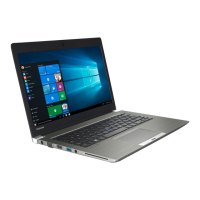
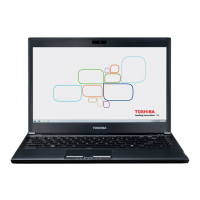


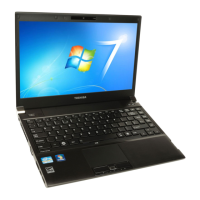

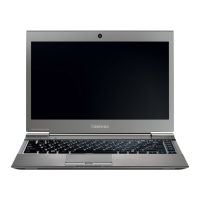

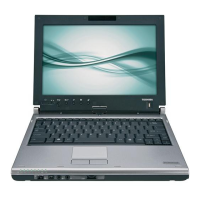
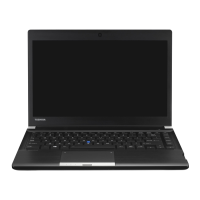
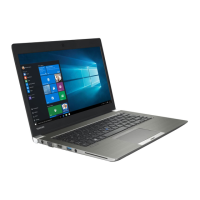
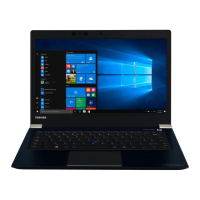
